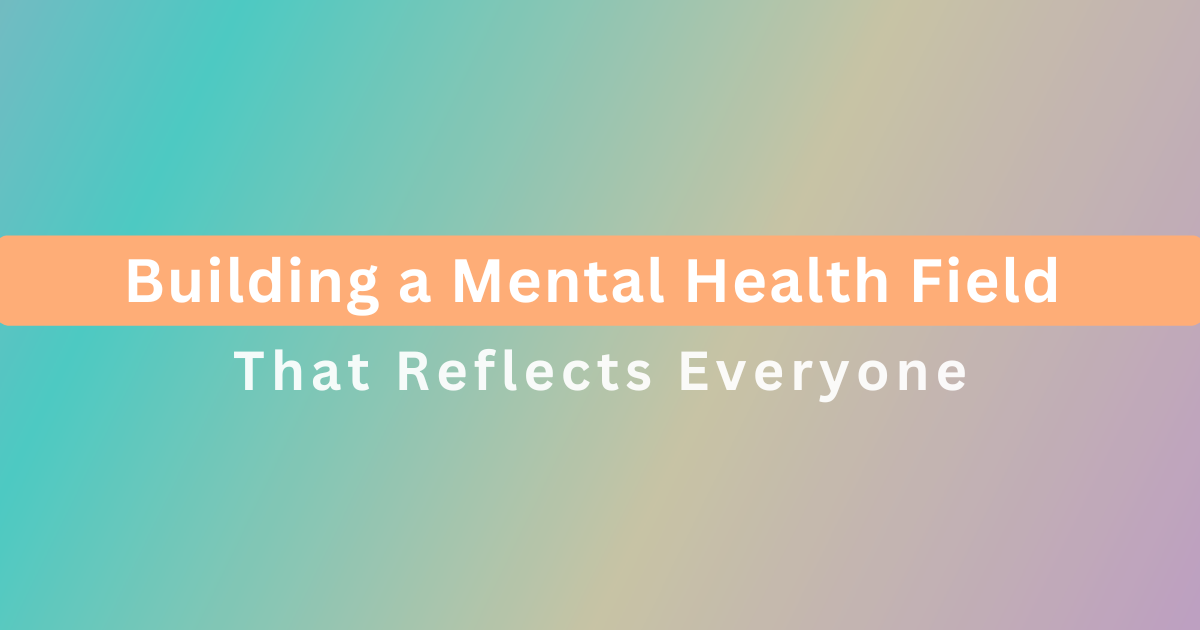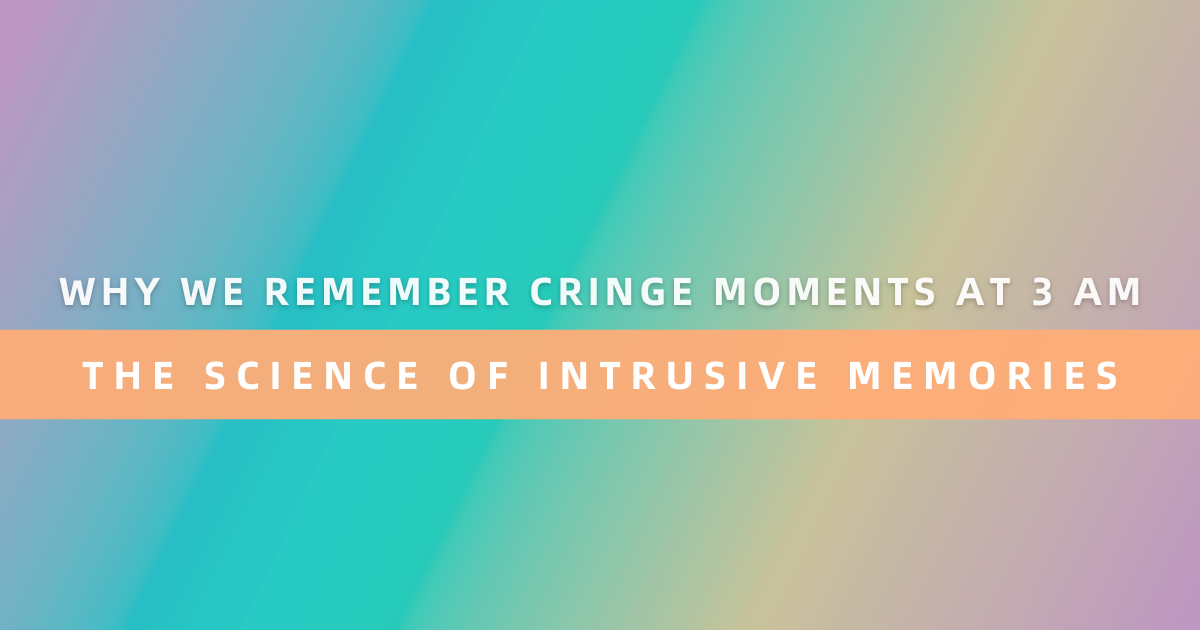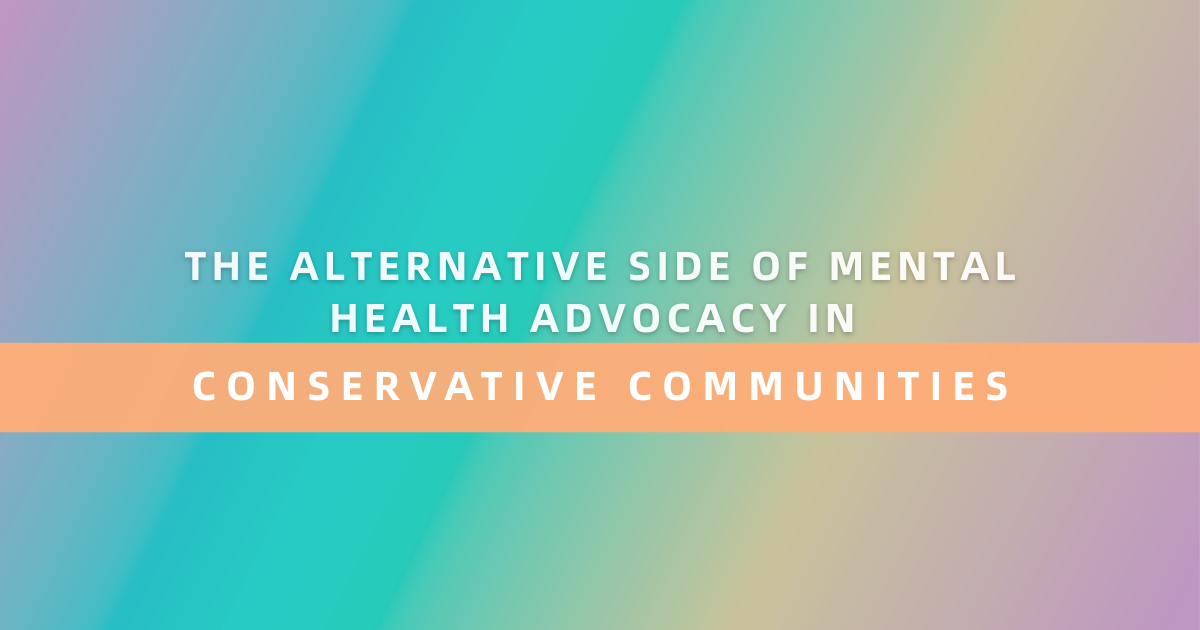Have you ever sought support but felt like the space wasn’t designed for you? Like the very system meant to help, didn’t quite understand who you are? Many people face this reality when seeking mental health care. Despite the increasing diversity in our communities, the mental health field has not kept up. The professionals providing care most of the time don’t reflect the backgrounds, cultures, or experiences of the people they serve.
This lack of representation is a real barrier to healing. Therapy is built on trust. When someone sits across from a provider who understands their cultural values, lived experiences, and unspoken struggles, trust forms more quickly, and the healing process becomes more meaningful. But for too many people, that connection is still out of reach.
So, how do we get there? What’s standing in the way? And what can be done to make mental health care a field for all? Let’s talk about it.
Current Overview of the Mental Healthcare Board
Across the board, we face a reality that can no longer be overlooked: mental health care does not reflect the diversity of the people it serves. Despite an increasingly multicultural population, the mental health workforce remains predominantly White. According to the American Psychological Association (APA), as of 2023, 78.66% of psychologists in the U.S. were White. Five years earlier, this figure was 82.50%, meaning that progress has been slow at best after five years.
What does this mean for those seeking care? It means that many individuals, particularly those from underrepresented backgrounds, struggle to find a provider who understands their lived experiences.
The numbers paint a clear picture. Compared to the 78,60% of White Americans who seek mental health care, only 21.40% of people from other ethnicities do the same. And when they do, they are nearly twice as likely to seek help in emergency rooms rather than with a dedicated mental health provider. This scenario leads to late diagnoses, chronic conditions that persist for years, and a cycle where individuals are left without the care they need.
However, Racial diversity is not the only gap in mental health care. LGBTQ+ representation among psychologists remains disproportionately low, leaving many individuals struggling to find therapists who truly understand their experiences. This lack of representation impacts both providers and those seeking care. Around one in eight LGBTQ+ individuals have experienced unequal treatment from healthcare staff simply because of their identity. The absence of LGBTQ+ professionals in the healthcare field means fewer providers who share the lived realities of the community, leading to therapy experiences that feel disconnected, unrelatable, or even alienating.
Barriers to Diversity in Mental Health Careers
Our journey to a more inclusive mental health is essential to understanding the challenges that hinder diversity within the profession.
Financial Barrier
The cost of education alone can be overwhelming, especially for individuals from underrepresented communities who already face financial hurdles. This burden often deters aspiring professionals, limiting the diversity of voices in the field before they even have the chance to begin.
To put it into perspective, as of 2024:
- The average research Doctorate holder from a public university owes $187,030 in student debt.
- For those attending private universities, this debt jumps to an average of $247,500.
Historical and Systemic Racism
The legacy of racism within psychiatry has left deep scars. Historically, psychiatric diagnoses were misused to perpetuate racial stereotypes and justify discrimination. For example, in the 19th century, certain diagnoses were crafted to label enslaved individuals who sought freedom as mentally ill. Black individuals were also wrongly seen as less intelligent, and forced labor was used as a so-called “treatment” for mental illness in public hospitals. This history of neglect and mistreatment, along with the long-term lack of funding for Black mental health services, has led to a lingering mistrust of the mental health profession among marginalized communities.
Cultural Barriers and Lack of Representation
The underrepresentation of minority groups among mental health professionals can lead to cultural misunderstandings and a lack of culturally competent care. When patients don’t see themselves reflected in their caregivers, it can hinder the therapeutic alliance and discourage individuals from seeking help. This gap underscores the need for a workforce that mirrors the diverse populations it serves.
Licensing and Standardized Testing Challenges
Standardized licensing exams have been criticized for cultural biases that disadvantage candidates from diverse backgrounds. Disparities in pass rates suggest that these exams may not fully account for the varied experiences and perspectives of all test-takers. This issue can prevent qualified individuals from entering the profession, further exacerbating the lack of diversity.
Geographical and Resource Limitations
In many regions, especially rural and remote areas, mental health services are scarce. Indigenous communities, for instance, often face significant challenges in accessing culturally appropriate care. Research shows that within rural areas, racial and ethnic minorities experience worse mental health outcomes than their White counterparts. American Indian and Alaska Native (AI/AN) communities report higher rates of frequent mental distress and depression, while rural African Americans also face greater mental health struggles. The lack of services in these areas not only affects those in need but also discourages potential practitioners from these communities from pursuing careers in mental health.
Stigma and Lack of Support
Within some cultures, mental health issues carry a significant stigma, which can extend to those who choose to work in the field. This societal pressure can dissuade individuals from pursuing careers in mental health, thereby limiting the diversity of perspectives within the profession. Stigma varies across cultures—some see mental illness as a personal weakness, while others link it to family conflict or supernatural causes. In some communities, seeking help is seen as shameful, further discouraging both patients and future professionals. Even healthcare providers can be influenced by these cultural beliefs, affecting how they diagnose and treat mental health conditions.
Educational and Mentorship Gaps
Mentorship is essential for underrepresented professionals entering the mental health field, yet many struggle to find mentors who understand their lived experiences. This lack of culturally responsive mentorship creates a major barrier, making it harder for them to navigate industry norms, build confidence, and feel a sense of belonging. Without proper guidance, they are more likely to experience imposter syndrome and stereotype threat, which can lead to higher dropout rates and fewer diverse professionals in the field.
So what happens when we break down these barriers? What does the future of mental health care look like when everyone feels truly seen?
How to Build a More Inclusive Mental Health Field
A diverse mental health workforce ensures that everyone receives personalized, culturally aware, and effective care. Achieving true progress requires action at multiple levels. Some essential changes needed are:
Increase Access to Mental Health Education
For many aspiring professionals, the biggest challenge is the cost of education. Graduate degrees in psychology, counseling, and psychiatry require years of study and significant financial investment. Without proper funding, many talented individuals from underrepresented communities never get the chance to enter the field. Expanding scholarships, loan forgiveness programs, and paid internships can help alleviate this burden, ensuring that financial barriers don’t dictate who becomes a mental health provider.
Strong Mentorship and Support Networks
Representation matters. When individuals see professionals who share their backgrounds and experiences, it reinforces the idea that mental health is a field where they belong. Strong mentorship programs, peer networks, and leadership initiatives can help guide aspiring professionals, giving them access to the resources, encouragement, and role models they need to thrive.
Use of Technology for Personalized and Inclusive Care
Even as we work toward increasing diversity in mental health providers, innovative technology can bridge the gap for those struggling to find culturally competent care. Platforms like Theryo are revolutionizing mental health support by providing personalized mental health tracking and therapy recommendations. Theryo analyze behavioral data patterns and help patients and their providers make more informed decisions. With AI-powered insights, mental health support becomes more adaptable and accessible, regardless of location or background.
Expand Community-Based Mental Health Initiatives
Many individuals in underserved communities lack access to mental health resources, not because they don’t need them, but because services are out of reach. Expanding community-based clinics, mobile therapy programs, and telehealth services can make a tremendous impact. When care is brought into neighborhoods and adapted to meet the cultural needs of different communities, it becomes more approachable and effective.
Policy Changes and Institutional Commitment
A more inclusive mental health system requires a deep commitment from institutions and policymakers. Advocating for diverse hiring practices, integrating cultural competency training into education programs, and revising licensing requirements to remove biases can ensure that the mental health workforce reflects the communities it serves.
A Future Of The Mental Health Field That Welcomes Everyone
When diversity thrives in mental health, healing becomes more natural, more meaningful, and more deeply connected to the experiences of those who seek it. It means fewer people question if their therapist understands them. Fewer individuals feel like their struggles don’t fit into a clinical textbook. More people are finding the care that speaks to who they are, in a way that feels right for them.
The beauty of progress is that it happens in many ways. Some lead by becoming the mental health professionals they wish they had been. Others create platforms like Theryo, using technology to personalize therapy recommendations and mental health tracking so people receive support that evolves with their needs. Some advocate for policy changes, ensuring mental health services are more inclusive and accessible for all. Some simply start conversations, helping others see why this matters.
No step is too small. You don’t have to be a therapist, a policymaker, or a tech expert to make a difference. Every conversation you have, every time you advocate for better mental health access, every moment you encourage someone to seek help, it all counts.
Because the future of mental health isn’t something we wait for. It’s something we build. And we’re building it together.
Frequently Asked Questions
1. Why is diversity important in mental health care?
Diversity in mental health care ensures that providers can understand and relate to the unique cultural backgrounds, lived experiences, and values of their clients. When clients work with providers who share similar backgrounds or understand their cultural context, it builds trust faster, improves communication, and leads to more effective treatment outcomes. Research shows that clients are more likely to continue therapy and experience better results when they feel culturally understood.
2. How long will it take to achieve true diversity in the mental health field?
Creating meaningful change in workforce diversity is a long-term commitment that requires sustained effort across multiple levels. While progress has been slow, acceleration is possible through coordinated efforts in education funding, policy changes, community initiatives, and technological innovation. The timeline depends on our collective commitment to removing barriers and creating inclusive pathways into the profession.
3. How can I find a therapist who shares my cultural background or identity?
Start by using therapist directories that allow filtering by specialties, cultural backgrounds, and languages spoken. Many platforms now include options to search for providers who identify as BIPOC, LGBTQ+, or who specialize in specific cultural communities. You can also reach out to cultural community centers, LGBTQ+ organizations, or advocacy groups for referrals. Platforms like Theryo use AI technology to help match clients with providers based on their specific needs and preferences.
4. What are the main barriers preventing diversity in mental health careers?
The primary barriers include: high education costs (averaging $187,030 to $247,500 in student debt), historical and systemic racism that creates mistrust, cultural stigma around mental health careers, biased licensing exams, lack of mentorship for underrepresented groups, and limited access to mental health education in rural and underserved areas. These barriers work together to create significant obstacles for aspiring professionals from diverse backgrounds.
5. How does a lack of diversity affect mental health treatment outcomes?
When mental health providers don’t reflect the diversity of their clients, it can lead to cultural misunderstandings, misdiagnoses, and ineffective treatment plans. Clients may feel misunderstood or judged, leading to early therapy dropout. Statistics show that while 78.6% of White Americans seek mental health care, only 21.4% of people from other ethnicities do the same, and they’re nearly twice as likely to seek help in emergency rooms rather than with dedicated providers.
6. What can I do to support diversity in mental health if I’m not a mental health professional?
You can advocate for mental health funding in underserved communities, support scholarships for underrepresented students pursuing mental health careers, share resources about culturally competent care, challenge mental health stigma in your community, and support organizations working to increase diversity in the field. Even having conversations about the importance of representation in mental health care makes a difference.
7. Are there scholarship programs for underrepresented groups entering mental health fields?
Yes, several organizations offer scholarships specifically for underrepresented students pursuing mental health careers. These include the Minority Fellowship Program by the American Psychological Association, the National Association of Social Workers scholarships, and various university-specific diversity scholarships. Many professional associations also offer grants and funding opportunities for students from marginalized backgrounds.
8. How is technology like Theryo helping address the diversity gap in mental health?
Platforms like Theryo use AI-powered technology to provide personalized mental health support that adapts to individual needs and cultural contexts. By analyzing behavioral patterns and providing culturally aware insights, these platforms help bridge the gap while we work toward increasing diversity among providers. They offer accessible support regardless of location and can help connect users with providers who understand their specific backgrounds and needs.
9. What role does mentorship play in increasing diversity in mental health careers?
Mentorship is crucial for helping underrepresented professionals navigate the mental health field. Good mentors provide guidance on career development, help build professional networks, offer emotional support, and share strategies for overcoming systemic barriers. However, many aspiring professionals struggle to find mentors who understand their lived experiences, which is why creating structured mentorship programs for diverse students is essential.
10. How can mental health education programs become more inclusive?
Education programs can increase inclusivity by actively recruiting diverse students, providing financial assistance, incorporating multicultural perspectives into curricula, hiring diverse faculty, addressing cultural biases in standardized testing, creating supportive environments for underrepresented students, and partnering with community organizations to create pathways into the profession. Programs should also include comprehensive cultural competency training for all students.
11. What is cultural competency in mental health care, and why does it matter?
Cultural competency refers to a provider’s ability to understand, respect, and effectively work with clients from diverse cultural backgrounds. It involves recognizing how culture influences mental health perceptions, help-seeking behaviors, and treatment preferences. Culturally competent care leads to better therapeutic relationships, more accurate diagnoses, and treatment approaches that align with clients’ values and beliefs, ultimately resulting in better mental health outcomes.







